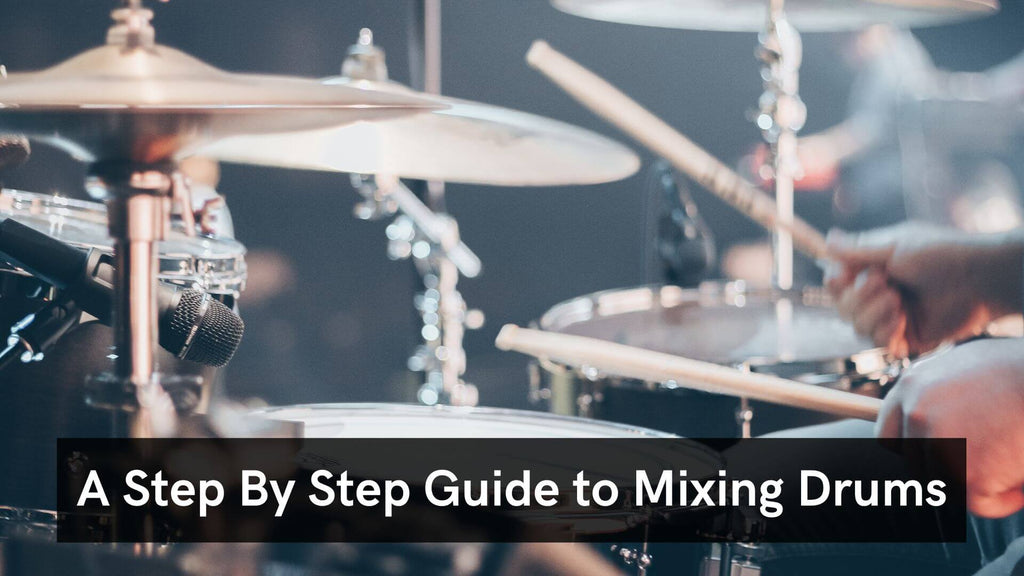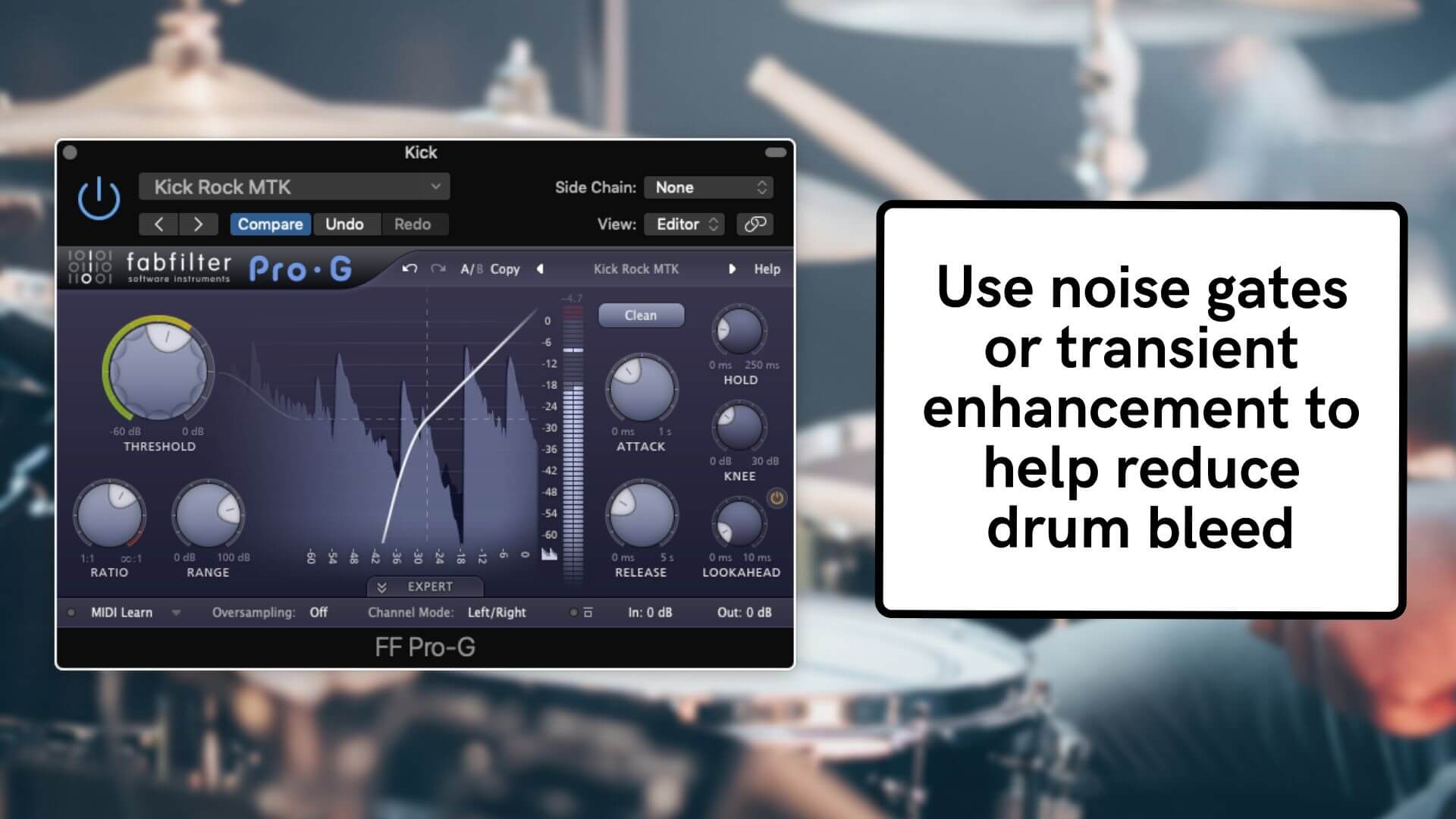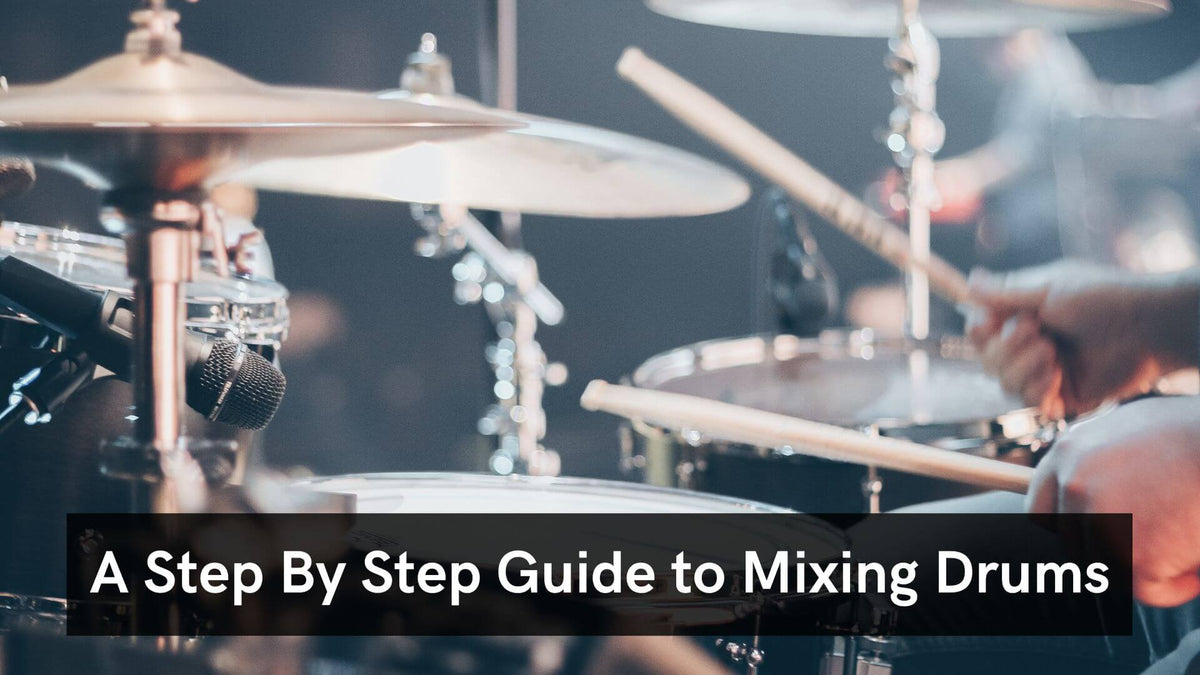Mixing drums is a crucial part of music production. To achieve a balanced and professional sound, follow these step by step instructions.
Drum mixing is a fundamental component of music production. It’s vital for creating an impactful sound. If you want to make sure your drums are a forceful part of your music, you need to get the mixing right. Equalization, panning, and compression are just some of the techniques used to make your drums sound their best.
In this guide, we will walk you through the steps to achieving high-quality drum mixing. Let’s get started!
Preparing The Tracks
Learn how to mix drums like a pro by carefully preparing the tracks with this step by step guide. From setting levels to EQing, these tips will help you achieve a polished drum sound.
Preparing The Tracks: Mixing drums is an essential part of music production, and it requires a lot of attention and care to get the perfect mix. One of the crucial steps in mixing drums is preparing the tracks. This includes organizing and naming the tracks, editing and trimming the tracks, and so on. In this article, we’ll focus on the steps you need to follow to prepare your tracks for mixing drums. Let’s begin with the first step- naming and organizing tracks.
Naming And Organizing Tracks
Naming and organizing the tracks are important for keeping the session clean and managing files effectively. It’s easy to get lost in a long list of tracks without proper naming and organization. Here are some tips to help you:
| Tips | Description |
| Keep it Simple | Use simple names that reflect the sound of the instrument you are recording. For example, ‘Kick’, ‘Snare Top’, ‘Overhead Left’, and so on. |
| Use Color Codes | Assign a specific color to each track to make it easier to identify and distinguish among them. For example, the color purple to the kick drum, blue to snare, and green to hi-hat. |
| Group Similar Instruments Together | Grouping similar instruments helps to manage and control the mix quickly. For example, group all the tom-tom tracks together, or all the overheads together. |
Editing And Trimming The Tracks
Now that the tracks are organized and named, the next step is to edit and trim them. This process involves getting rid of any unwanted noise or silence at the beginning or end of the tracks. Here are some tips for editing and trimming the tracks:
- Cut out Silence: Remove any unwanted silences at the beginning or end of the tracks using the fade-in and fade-out tools.
- Trimming: Trim the excess track at the start and end of the recording to ensure a clean start and finish.
- Aligning: Align all the tracks to start at the same point to avoid any timing issues later during the mixing process.
In conclusion, preparing the tracks is a significant part of mixing drums. Properly organizing and naming the tracks, and editing and trimming them will not only help manage and control the mix but also make it easier to navigate and collaborate with others. So, take your time and ensure everything is in order before moving to the next step.
Getting The Levels Right
If you want to make your drums sound great, you need to get the levels right. This means ensuring that the volume of each drum track is balanced with the others. If one drum track is too loud, it will drown out the others and make your mix sound muddy. Conversely, if one track is too quiet, it will be lost in the mix and not be heard.
Mixing Instruments Separately
Before you start adjusting levels, it’s important to mix each instrument separately. This means adjusting the EQ, compression, and other effects for each drum track separately. Once you have each track sounding great on its own, you can begin to balance the levels with the others.
Setting Levels For Each Track
To set the levels for each drum track, start by soloing one track at a time. Listen to the track and adjust the volume fader until it sounds balanced with the others. You want to be able to hear each individual track clearly, but not have any track be too loud or too quiet.
Once you have set the levels for each track, listen to the mix as a whole. If any track still sounds too loud or too quiet, adjust the faders accordingly. Keep doing this until you have a balanced mix where each track can be heard clearly.
Remember, getting the levels right is just the first step in mixing drums. There are many other factors to consider, such as panning, reverb, and overall EQ. But by getting the levels right, you’ll be well on your way to a great-sounding drum mix.
Applying Eq
Learn how to mix drums like a pro with this step-by-step guide, using EQ to balance and shape each element of the kit. From kick and snare to cymbals and toms, you’ll discover the essential techniques for achieving a professional sound in your mixes.
Identifying Frequency Conflicts
The first step in applying EQ to your drum mix is identifying frequency conflicts. Start by soloing each drum track to determine which frequencies are clashing with other elements in the mix. Common frequency conflicts include the snare and hi-hat competing in the high frequencies, or the kick drum and bass guitar fighting for space in the low frequencies. Once you’ve identified the problem frequencies, you can use EQ to carve out space for each element.
Sculpting The Sound With Equalization
Next, it’s time to sculpt the sound with equalization. Begin by applying a high-pass filter to the kick drum to remove any unnecessary low-end rumble and make room for the bass guitar. Then, use a parametric EQ to boost or cut specific frequencies on each drum track. For example, you might boost the attack of the snare drum around 5kHz to make it cut through the mix, or cut the muddy midrange frequencies on the toms to clean up the sound.
Using Compression To Control Dynamics
After applying EQ, it’s a good idea to use compression to further shape the sound of your drums. Compression can be used to control the dynamic range of each drum track, making the quiet parts louder and the loud parts quieter. This can help to even out the sound of each drum and make them sit together more cohesively in the mix. By following these steps, you can achieve a professional-quality drum mix that is balanced, clear, and punchy.

Credit: www.masteringthemix.com
Adding Compression
Adding compression is an essential step in mixing drums. It helps to even out the dynamics and bring the drums to life. Here is a step-by-step guide on how to effectively add compression to your drum mix.
Understanding Compression
Compression is an essential tool in mixing drums. It helps control the dynamic range of the drums, bringing up the quiet parts and bringing down the louder parts. In simple terms, it reduces the dynamic range of the audio signal. This means that the quiet parts are boosted and the loud parts are attenuated.
Applying Compression To The Drum Tracks
To apply compression to the drum tracks, you need to start by identifying the drum track that needs compression. This could be the kick, snare, or overheads. Once you have identified the drum track, you need to set the threshold, ratio, attack, and release. To set the threshold, you need to listen to the drum track and adjust the threshold until the compressor starts to work. This means that the compressor will start to reduce the volume of the drum track when the signal goes above the threshold. The ratio determines the amount of compression that is applied to the signal. The higher the ratio, the more compression will be applied. A good starting point is a ratio of 4:1. The attack and release controls how quickly the compressor starts to work and how quickly it stops working. The attack controls how quickly the compressor starts working, and the release controls how quickly the compressor stops working. Overall, adding compression to your drum tracks can make a huge difference in your mix. It can help control the dynamic range of the drums and bring out the nuances of the performance. Experiment with different settings until you find the right balance that works for your mix.
Adding Reverb And Delay
Achieving a well-mixed drum sound can be challenging, but adding reverb and delay can help create depth and dimension. Start by selecting the appropriate types of reverb and delay, experiment with different settings, and use them in moderation to enhance the overall sound of the drums.
Adding Reverb and Delay can take your drum mix to the next level. Reverb and Delay add depth and space to your drum sound, making it sound fuller and more professional. In this section of the guide, we will cover everything you need to know about choosing the right reverb and delay and applying them to your drum tracks.
Choosing The Right Reverb And Delay
When choosing the right Reverb and Delay for your drum mix, you need to consider the type of music you are mixing. Different genres of music require different types of Reverb and Delay effects. There are various types of Reverb and Delay effects to choose from, such as Room Reverb, Plate Reverb, Hall Reverb, Tape Delay, and Digital Delay. Here are some tips on choosing the right Reverb and Delay for your drum mix:
- Choose a Reverb and Delay that matches the genre of music you’re mixing.
- Experiment with different Reverb and Delay plugins to find the perfect fit.
- Try to use the same Reverb and Delay on all your drum tracks to create a cohesive sound.
Applying Reverb And Delay To The Drum Tracks
Now that you have chosen the right Reverb and Delay for your drum mix, it’s time to apply it to the drum tracks. Here are the steps you should follow:
- Insert a Reverb and Delay plugin on your drum bus.
- Adjust the settings to achieve the desired effect. Start with small amounts of Reverb and Delay and gradually increase until you get the desired sound.
- If you’re using different Reverb and Delay plugins on individual drum tracks, make sure they all blend together well.
- Adjust the Reverb and Delay settings on individual drum tracks if necessary. For example, you may want to add more Reverb to the snare drum or more Delay to the hi-hats.
- Make sure the Reverb and Delay effects don’t overpower the dry sound of the drums. The effect should be subtle and add to the overall sound, not take away from it.
In conclusion, adding Reverb and Delay can make a huge difference in your drum mix. With the right Reverb and Delay plugins and settings, you can create a professional, polished sound that enhances the music. Follow these simple tips to achieve the perfect Reverb and Delay sound on your drum tracks.

Credit: www.masteringthemix.com
Finalizing The Mix
In this step-by-step guide to mixing drums, finalizing the mix is crucial in achieving a professional and polished sound. It involves fine-tuning the EQ, compression, and effects on each individual drum track and ensuring the overall balance and coherence of the drum sound.
Balancing The Mix
Once you have EQ’d and compressed each drum track, it’s time to balance them to create a cohesive and well-rounded sound. Start by soloing the kick drum and adjusting the fader until it’s at the desired level. Then, slowly bring in the snare drum and balance the two until they sit well together. Continue this process for each drum track, making sure to adjust levels as you go to maintain a well-balanced mix.
Identifying And Fixing Problem Areas
Despite your best efforts, there may be some problem areas that need to be addressed. Listen carefully to your mix from start to finish and take note of any parts that sound off. Use EQ to remove harsh or muddy frequencies, and consider using automation to bring up any parts that are getting lost in the mix. If you’re having trouble with a particular drum track, try adjusting the timing or using a different sample until it sits well in the mix.
Final Considerations
Once you’ve balanced your drum mix and addressed any problem areas, it’s time to listen to your mix in the context of your entire song. Make sure the drums are not overpowering any other instruments, and that everything sits well together in the mix. Adjust levels and make any final tweaks until you’re happy with the overall sound. Remember, the key to a great drum mix is patience and attention to detail. Take your time, and keep experimenting until you achieve the sound you’re after.

Credit: www.masteringthemix.com
Frequently Asked Questions On A Step By Step Guide To Mixing Drums
How Do You Mix Drums Step By Step?
Mixing drums involves these steps: 1. Organize individual tracks, pan them and adjust volume levels for each drum. 2. Use Equalization to enhance the characteristics and remove any unwanted frequencies. 3. Apply compression to even out the drum hits and sustain levels.
4. Use reverb to create space around the drum kit. Adjust decay time and mix levels. 5. Finally, verify your mix by listening on various devices at diverse volume levels.
What Order Should You Mix Drums?
When it comes to mixing drums, follow these guidelines for best results: 1. Start with the kick drum, 2. add the snare, 3. add high-hat and cymbals, 4. add toms and other percussion, 5. adjust EQ and compression. Remember to experiment and trust your ears.
How Do You Balance Drums In A Mix?
To balance drums in a mix, ensure the levels are consistent, but also focus on the dynamics and frequencies. Use EQ to shape the sound and avoid overlapping frequencies with other instruments. Consider panning the drums and using compression to control the dynamics.
Lastly, use reverb and other effects sparingly and strategically.
What Level Should Drums Be In A Mix?
Drums should be mixed at a level that complements the overall feel of the song. However, a good rule of thumb is to keep the drums slightly lower than the lead instruments and vocals, but higher than the bassline. It’s important to monitor the volume levels and eq settings to ensure a balanced and cohesive sound.
Conclusion
Mixing drums can seem like a daunting task, but with these step-by-step guidelines, you can achieve a professional-sounding mix. Remember to prioritize balance, EQ, and compression to create a cohesive and dynamic drum sound. Don’t forget to experiment with different settings and techniques to find what works best for your specific mix.
Follow these tips and you’ll be well on your way to achieving the perfect drum mix for your song!